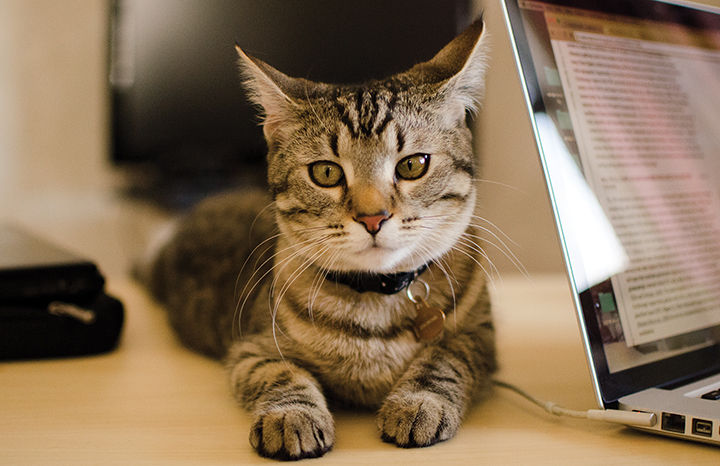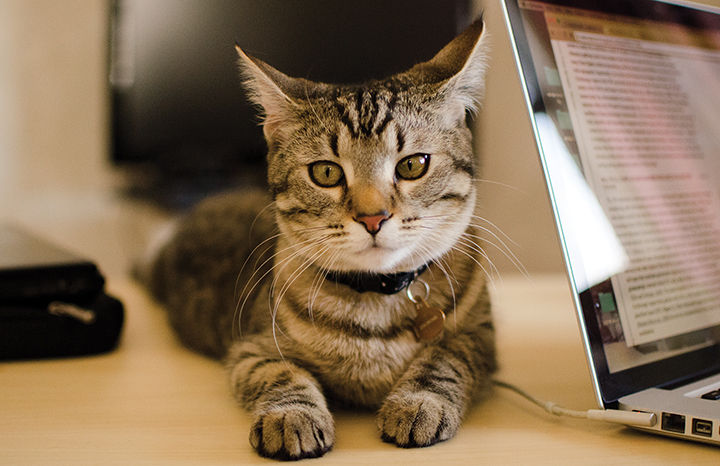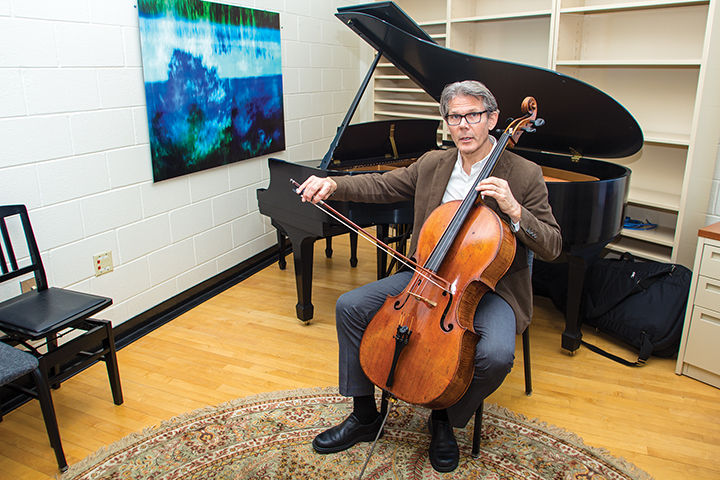Despite what one might assume while watching videos such as “Keyboard Cat” or medleys of cats dancing to dubstep, felines do not particularly enjoy human music.
In fact, cats have a disinterest in most music, as they have in many human activities, but that hardly means cats are not musically minded, one university professor found.
David Teie, a composer at the music school, wrote songs to appeal specifically to the musical senses of the largely domestic pet. Teie has released three singles for cats and co-authored a study published Feb. 19 in Applied Animal Behaviour Science that found cats had more interest in his original music than in the melodies of even the most distinguished human composers, such as Johann Sebastian Bach.
“A lot of people have cats,” Teie said, “so if I wanted to bring music to animals, it makes sense to bring it to a place where they’re not hard to find.”
The music imitates the pitch and tempo of sounds that naturally appeal to cats, such as purring, bird calls or even nursing, Teie said.
The study involved University of Wisconsin-Madison researchers visiting 47 cats at 23 homes and playing music to them. The researchers switched between three minutes of classical music and three minutes of “species-appropriate” music, said Charles Snowdon, the study’s lead author.
“What we found was that the cats responded significantly more to the cat music,” said Snowdon, an emeritus psychology professor at the University of Wisconsin-Madison. “They were very interested in and responded much faster to the cat music.”
Researchers recorded positive responses when observing the cats “orienting the head toward the speaker, [moving] toward the speaker, rubbing against the speaker, sniffing the speaker, and purring,” according to the study.
On average, the cats tested responded about six times more frequently to the species-appropriate music and about a minute faster than they responded to the human music, according to the study.
The cats responded equally to both the song imitating purring and the one imitating suckling, Snowdon said.
Snowdon and Teie previously worked together on a study in which the composer wrote species-specific music for monkeys, which sounded a bit like heavy metal and which cotton-topped tamarin monkeys seemed to enjoy. For this project, researchers designed the study independently of Teie to remain objective, he said.
These projects come from Teie’s interest in the evolutionary aspects of music, he said, as our hunting and gathering ancestors had an emotional response to certain sounds and melodies. He said humans enjoy music that sounds like what they heard during emotional development — such as a mother’s heartbeat, which makes us enjoy steady rhythms and bass pulses.
“One of the things that I thought could be done to test [this theory],” he said, “was that I should be able to write music for another species.”
To this end, Teie tried to approximate without directly replicating meaningful sounds in a young cat’s life. He used everything from a pencil eraser dropped in a resonant box to a sped-up cello and his own vocal approximations of purrs and birdsongs. He doesn’t expect to fool the cats, he said, but rather to evoke a feeling in the felines.
“The kitty is not going to think, ‘Oh, I got to get that bird in there,’” he said. “It’s more like, ‘I don’t know what that is, but I certainly feel like getting up and around.’”
Jonathan Fritz, a research scientist at this university’s Institute for Systems Research who studies auditory perception in humans and animals, said studies show many animals respond to music, including elephants and a cockatoo that danced to the Backstreet Boys. He said the study involving cat music is part of this body of research but noted a combination of factors could influence the musical interests of the animals.
“It’s an interesting part of a larger question of how music evolved,” said Fritz, who was not involved in the study. “[The result of the study] supports their hypothesis, but it doesn’t prove it.”
Teie said he wants the music he made for this study to be enjoyed by owners and felines.
“Music presents a stylized version of our own communication,” he said. “Music is a distillation of our own emotional connection. It’s a genuine and valid communication in a kind of a hybrid form.”
Teie has received positive responses from owners who have bonded with their cats through music, and he said he hopes it will continue to allow more communication between pets and owners. One day, he said, his music could be used in an app in which the owner could play a purring song to communicate feelings to their cat.
Two of Teie’s songs — “Rusty’s Ballad” and “Cozmo’s Air” — are currently available on iTunes, and his discography is also available on his personal website, musicforcats.com. Teie said he is working on a full album of cat music, which he hopes to release by the end of the summer, and is considering bringing species-specific music to more animals.
“Next is dogs,” he said.
David Teie composed music specifically designed to be enjoyed by cats.





